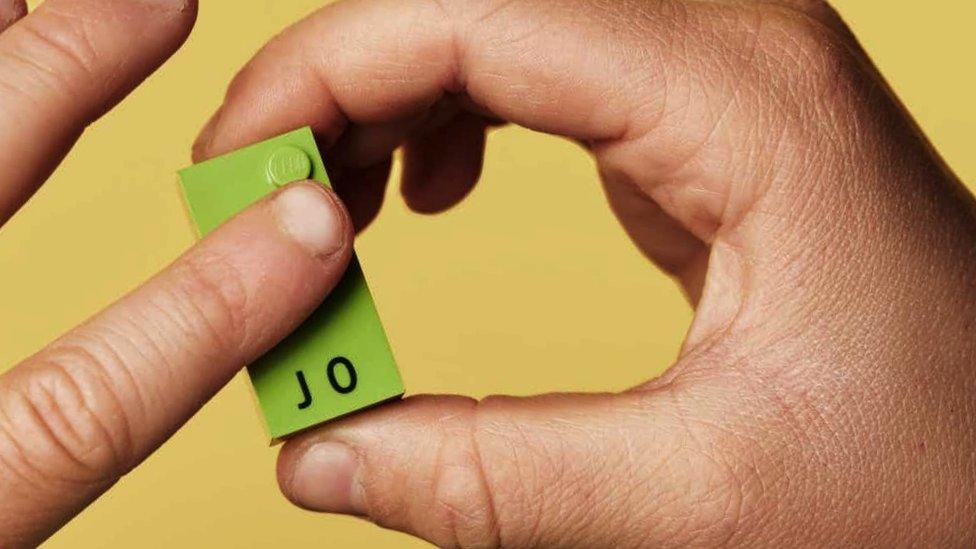World Braille Day: Everything you need to know
- Published
- comments
WATCH: Kids from a school in Bradford spoke to Newsround for World Braille Day.
World Braille Day is on 4 January and is a day to raise awareness of the importance of braille in helping blind and partially sighted people communicate.
According to the Royal National Institute of Blind People (RNIB) there are around 20,000 braille users in the UK.
We spoke to some pupils who use braille at school to find out how it helps them in and outside of the classroom. They also told Newsround where they'd like braille to be used more.
But what is braille and how does it work? Read on to find out!
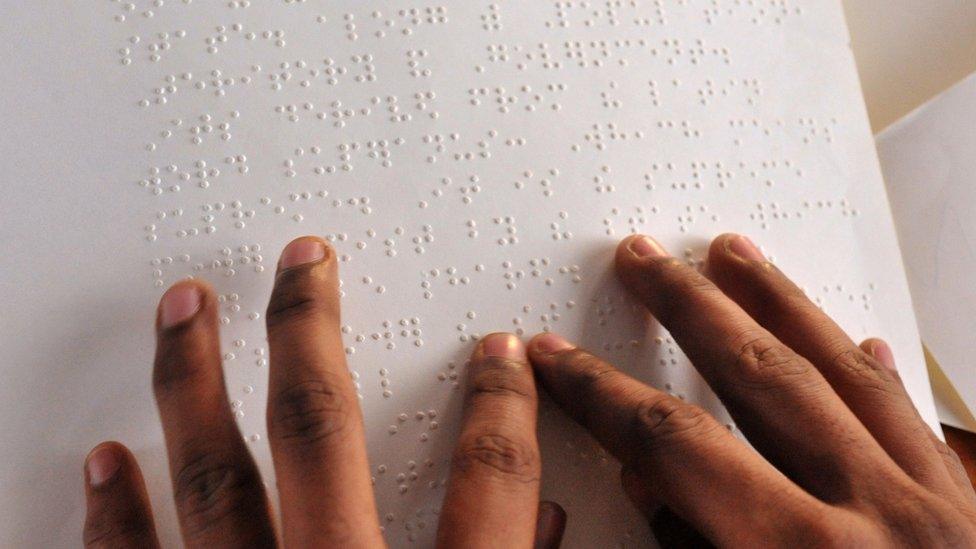
Braille has been adapted for use in languages across the world. Some children begin using braille as soon as they start school whereas others might have to learn braille as they grow older or if their eyesight changes and makes reading large print too tricky
Braille is a system of raised dots which enables a blind person or someone with a visual impairment to read and write.
They use their fingers to feel the shape of the dots, which tells them what the words are.
It is based on six dots, like the design on a domino. It consists of 63 symbols, made up of all the possible combinations of these dots.
Braille can be used for most of the world's languages.
It can be used to represent everything from basic letters and numbers to advanced mathematics and music.
It was invented nearly 200 years ago in 1824 by Frenchman Louis Braille.
Who was Louis Braille?

The French inventor Louis Braille handling a machine to type in braille in the 1830s
Louis Braille was born in 1806 in France and lost his sight at the age of three.
He was sent to the Royal Institution for Blind Youth in Paris and in 1821 he was introduced to a coded system of raised dots to read letters and words - a system used by soldiers to send and receive messages without making sound.
By 1824, aged 15 years old, Louis began developing his own system that would allow blind people to read and write quickly and had found 63 ways to use a six-dot cell in an area no bigger than a fingertip.
He died in 1852 and two years later his code - named braille - became the official communications system for blind people in France.
Nearly 200 years later it is still used by blind and partially sighted people across the world.
The importance of braille
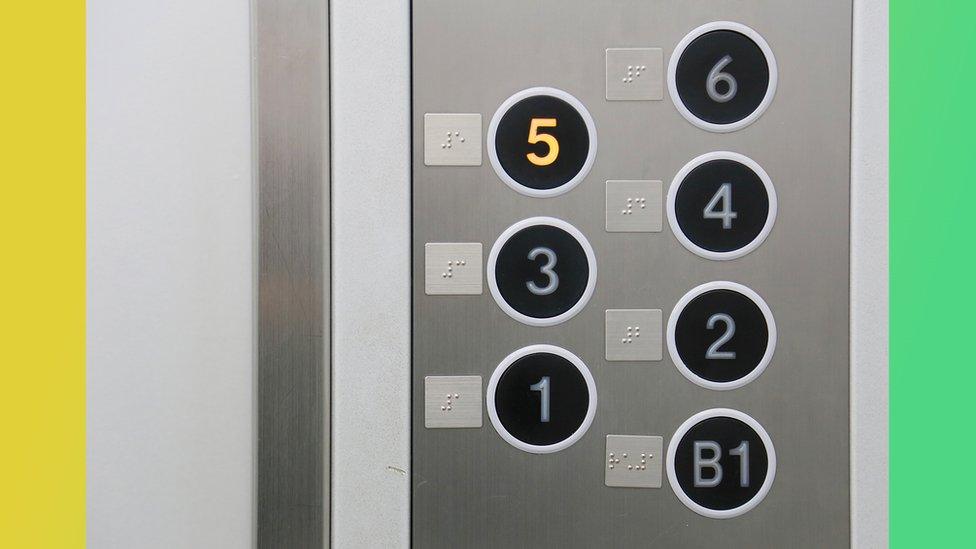
Without braille it is very difficult for blind children to learn how to read and write. Braille is often found next to the buttons on a lift to help guide blind or visually impaired people
Braille isn't only used for reading books, it's also used in other areas of life and is an important way to make things more accessible.
From buttons on lifts, to household products like shampoo, and from medicine packets to cash machines - braille is used across society to communicate to those that can read it.
But the kids Newsround spoke to think more can be done.
Muskaan, who is in Year 5, said: "When I go to restaurants I'd like to see the children's menu in braille so I don't have to have an adult reading the meal choices out for me, so I can choose for myself."
Ten-year-old Maryam loves shopping for stationery but says "It would be more helpful if the stationery things were in braille" including "how much it costs and what it is".
Ayaan told Newsround that "braille is already on medicine" but he'd "like to see more of it on food packaging".
And Iman said: "I'd like to see more braille on shop doors so I know which shop it is."
Other technology
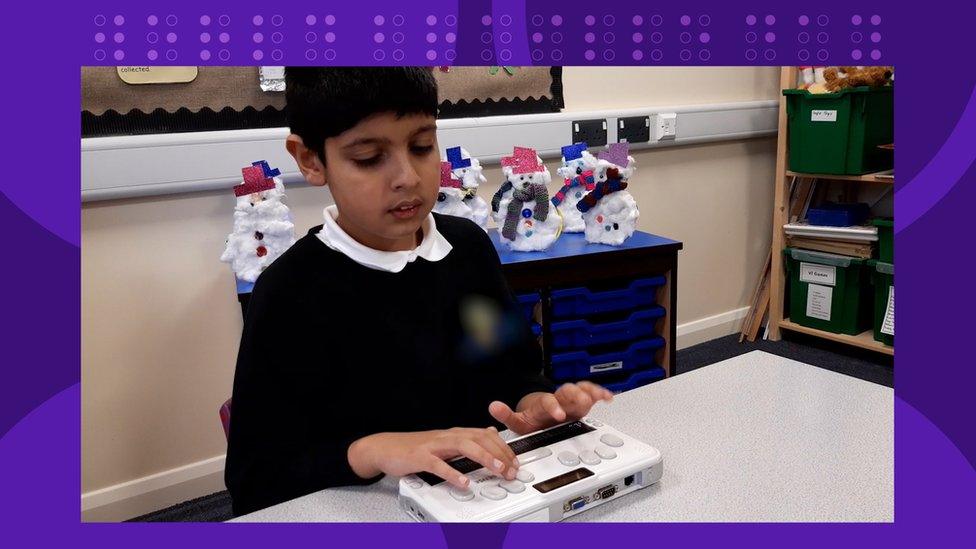
Ayaan is 10 years old and has learnt to record all his work in braille. He has a condition that makes reading braille very hard as he has very low finger sensitivity. So he uses an electronic Brailler to record his work in braille and listen to it back
Through the invention of audiobooks and screenreaders, blind and partially-sighted people now have access to things like websites or texts, without the need for braille.
Screenreaders convert text into speech and are built into many smartphones and computers.
Ten-year-old Ayaan uses a piece of equipment called a Braille Sense to record his work and listen to it back.
He goes to a mainstream school and learns alongside his sighted friends. He said that: "Technology has helped me work alongside my classmates."
The largest book in the Royal National Institute of Blind People Library is the Viking Opera Guide which is in 94 volumes of braille, occupying 2.5 metres of shelving!
Developments in technology are also making braille more user-friendly.
An average book or novel will be made up of five volumes of braille! But braille can also be electronic.
Refreshable braille displays involve a row of moving 'pins' that form braille characters as the user runs their fingers over them, almost like a braille version of an ebook.
- Published22 October 2019
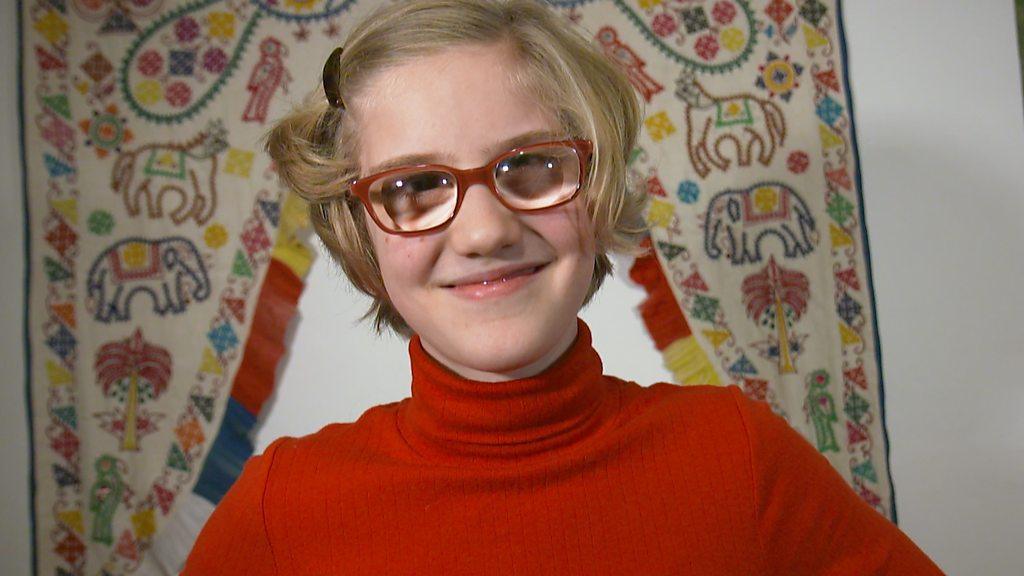
- Published28 September 2020

- Published30 December 2020
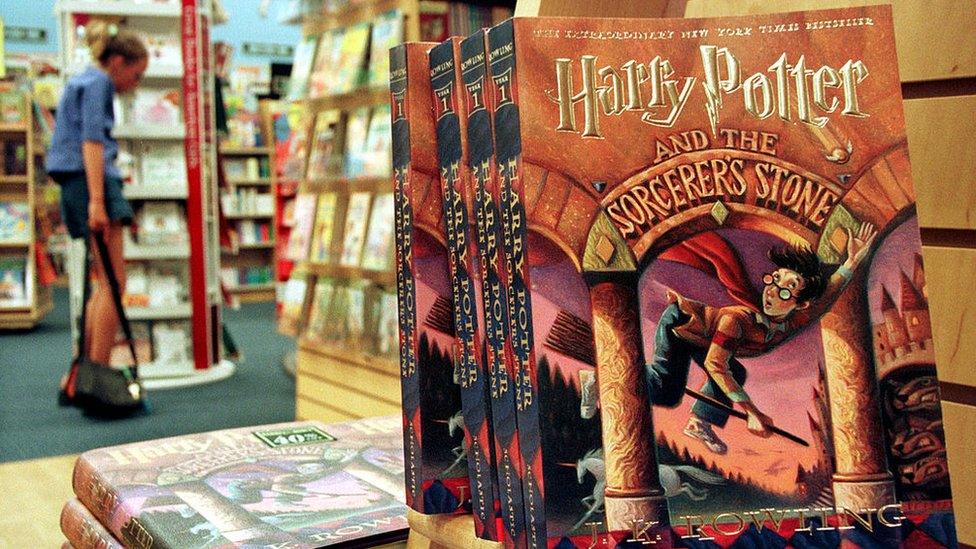
- Published21 August 2020
